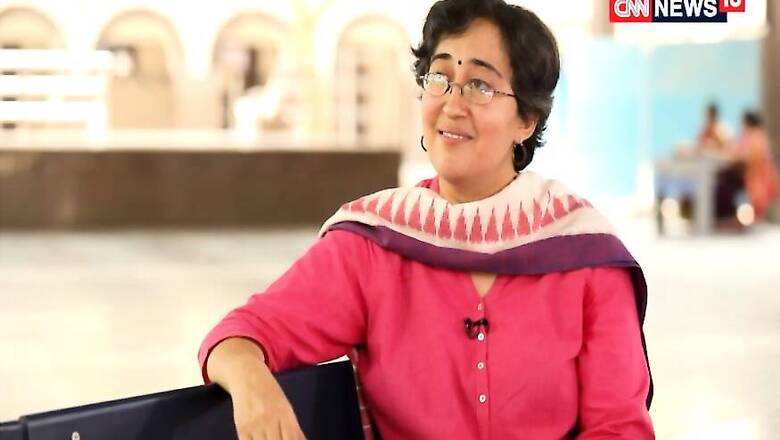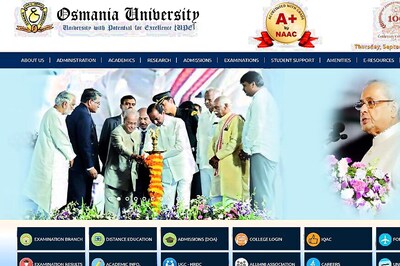
views
It’s said that politics is a great leveler. Last Sunday, Atishi Marlena, the Aam Aadmi Party (AAP) candidate from the East Delhi Lok Sabha seat held an unusual press conference to clarify her religion. She said that she was a Hindu Punjabi belonging to the Kshatriya community. Atishi, born to Marxist-Leninist parents, who gave a surname extracted from the names of their ideological icons Karl Marx and Vladimir Lenin, pushing her caste identity is an indication that politics in India is a way bit different from what Marx, Lenin and their ideological heirs pitched for.
For instance, 1,100 kilometers away in Bihar’s Begusarai, where the country’s best known Marxist Kanhaiya Kumar is in fray as the Communist Party of India (CPI) candidate, the electoral calculations are all based on which side the voters of Bhumihar caste will go. Kanhaiya, all through his campaign, despite swearing by the ideology of classless society has made no overt attempt to disown his caste identity.
Coming back to the national capital, Marlena is fast turning from being a ‘child of revolution’ to a Punjabi-Kshatriya, a combination heard for the first time in the 25 years that one has covered polls in this country, because her voters could care less for her ideology and seek more about her community.
She pitching herself as a Punjabi-Rajput, because her mentor deputy chief minister Manish Sisodia is a Kshatriya and the votes of his community, especially in the Patparganj and neigbouring assembly segments, are in good numbers. Not to forget that former cricketer Chetan Chauhan had contested from this seat in 2009 as a BJP candidate and polled decent amount of votes, which had large chunks of his community Rajput ballots.
What, however, got Marlena’s goat is the whisper campaign that she was Jew. One may wonder why this could be an election issue in India? Jewish resistance to spread of Islam is a part of Islamic history. East Delhi Lok Sabha seat has large population of Muslims, who will soon have to choose between Congress's Amrinder Singh Lovely and AAP's Marlena.
Thus, the necessity to clarify not only that she is not a Jew but also to assert that she is a Punjabi and that too, a Rajput. Marlena is alluding to Punjabi antecedents because the East Delhi Lok Sabha seat has 14.20 per cent votes of the community, next only to New Delhi, which has the Punjabi presence of 16.5 per cent. The Jew buzz hurt her because the Muslims are also present in the East Delhi seat in almost an equal number.
Before the advent of Sheila Dikshit in Delhi’s political scene, East Delhi Lok Sabha constituency always remained a ‘Punjabi refugee seat’, with former Delhi Congress strongman HKL Bhagat winning it in 1971, 1980, 1984, and 1989. In 1977, he had lost to another Punjabi refugee — Kishor Lal of the Janata Party.
The BJP had won the seat in 1967 (as Bharatiya Jana Sangh) and in 1991 again with Punjabi refugee candidates, Hardayal Devgun and Baikunthlal Sharma Prem respectively. It was only in 1997 bypolls that Punjabis lost and that too to a Purvanchali — BJP leader Lal Bihari Tiwari, who defeated Ashok Walia of the Congress. Walia lost largely because Bhagat had contested that election as a rebel and polled votes almost equal to Walia.
Although Sheila Dikshit contested and lost narrowly to Tiwari in 1998, in 1999 Congress went back to fielding a Punjabi, HKL Kapur, who lost to Tiwari but polled 4.38 lakh votes. At the height of Dikshit’s popularity as chief minister, her son Sandeep Dikshit won the seat in 2004 and 2009 and lost in 2014.
This time around, all the three candidates in the fray – Gautam Gambhir of the BJP, Atishi Marlena of the AAP and Arvinder Singh Lovely of the Congress – are Punjabi, if Marlena’s contention is to be accepted. All three are eyeing the Punjabi votes spread across all the 10 assembly segments.
Between Marlena and Lovely, there is the contest for the Muslim votes too, which again has presence in almost all the segments, particularly dominant in Okhla. Even at the peak of the Narendra Modi wave in 2014, the BJP candidate Mahesh Giri from East Delhi could not cross the 50 per cent vote mark and scored less than the combined vote of the AAP and Congress. At that time, Congress was at its nadir and the AAP was in the best of health with a well-known face in Rajmohan Gandhi, grandson of Mahatma Gandhi, contesting on its broom symbol.
As mentioned earlier, this time all the three candidates are wooing the Punjabi votes aggressively by revisiting the strategies to woo the vote bank —which had visually gone dormant following the rise of Sheila Dikshit and her brand of metropolitan politics.
There is no denying the fact that the influence of Punjabi voters always remained, even during Dikshit’s tenure. It was tactfully harvested largely by the Congress, first through Har Kishan Lal Bhagat who was a political colossus in his time, and later through Team Dikshit, especially in East Delhi, through leaders like Walia and Lovely. Will the Congress manage to regain the lost turf or the Punjabi votes for a more famous face from their community in BJP candidate, cricketer Gautam Gambhir, or would it support the Punjabi-Rajput in Marlena is something which should be of much interest to all.
(The writer is a senior journalist and political analyst)




















Comments
0 comment